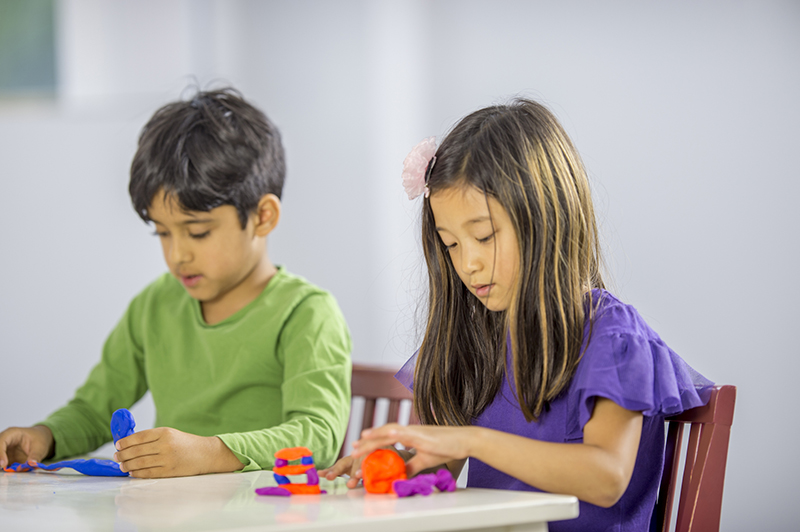Families For Life | Let's Have Fun with Dough!

Roll, poke, coil, pound, flatten, squeeze, stretch — there is nothing more hands-on than play dough! There is pleasure in shaping the dough and even more that the imagination is the only limit to the possibilities of what the dough can be shaped to. A wiggly snake, a flat round pancake, a smiley cat, a barking dog. With a squeeze, they become a formless lump again, ready become another creation.
Modelling compounds enhance your child’s growth in every aspect. Experimenting with hands develops and refines finger and arm muscles, while improving hand-eye coordination. Kneading lumps of clay with a rolling pin promotes large-muscle development.
Socially, playing with dough encourages cooperation among children, as they share ideas and come together to work on projects. It’s also a great way for younger children to model as they can watch and learn from their older, faster companions who are more expressive and dextrous.
Emotionally, play dough offers a natural outlet for your child to express strong feelings. He can pound on a lump of dough if he’s angry or frustrated, or use a rolling pin to relax and release tension. The open-ended nature of play also offers your child a sense of success and achievement, increasing confidence and building self-esteem.
Cognitively and linguistically, playing with dough can foster a better grasp of math and science concepts. Dividing the dough requires your child to use one-to-one correspondent reasoning, and sharpens problem-solving skills. As you talk him through the process, he also expands his vocabulary and learns to associate the tactile sensations in his hands to words you use to describe them.
Make the dough
- 5 cups of flour
- 2 ½ cups of water
- 2 ½ cups of salt
- Food colouring
Mix the ingredients together thoroughly and use the food colouring to dye different portions of dough.
Activity #1: Different textures
Use unusual ingredients to add texture to play dough – this boosts both gross and fine motor skills as your child tries to incorporate different ingredients into the basic dough.
- homemade play dough
- large plastic bag
- tactile items, such as cotton balls, pebbles, dried beans, dried coffee grounds, etc.
Note:
Any household materials with interesting textures can be used — green beans, red beans, white dried fungus cut into small bits, washing sponge cut into small bits, dried seeds from fruits such as papaya, jackfruit, avocado etc that have been washed or cleaned.
- Place each different tactile item into a separate bowl.
- Ask your child to touch each item one by one and describe them. Encourage him to use words such as soft, hard, smooth, rough, grainy, bumpy and slimy. Encourage children to pass the bowls around so they can feel all the materials.
- Working one bowl at a time, take a portion of dough and add some of the tactile item. Ask your child to knead the dough, and describe how the dough feels. Ask him to describe what he’s doing, and how the texture is changing.
Activity #2: Different smells
Instead of textures, try smells. Achieve this by using food flavour essences like vanilla, pandan, lemon, almond, pungent spices like anise, clove, peppercorns, or essential oils, and fragrant soaps too.
Get your child to describe the smell and recall if there are smells just like this from before.
Explore more
- Creative play (3-6 years)
- Creating with play dough (3-6 years)
- Imagining and creating: preschoolers
- Imagining and creating: school-age children
- Preschooler creative learning and development: ideas and activities
Contributed by:
Early Childhood Development Agency